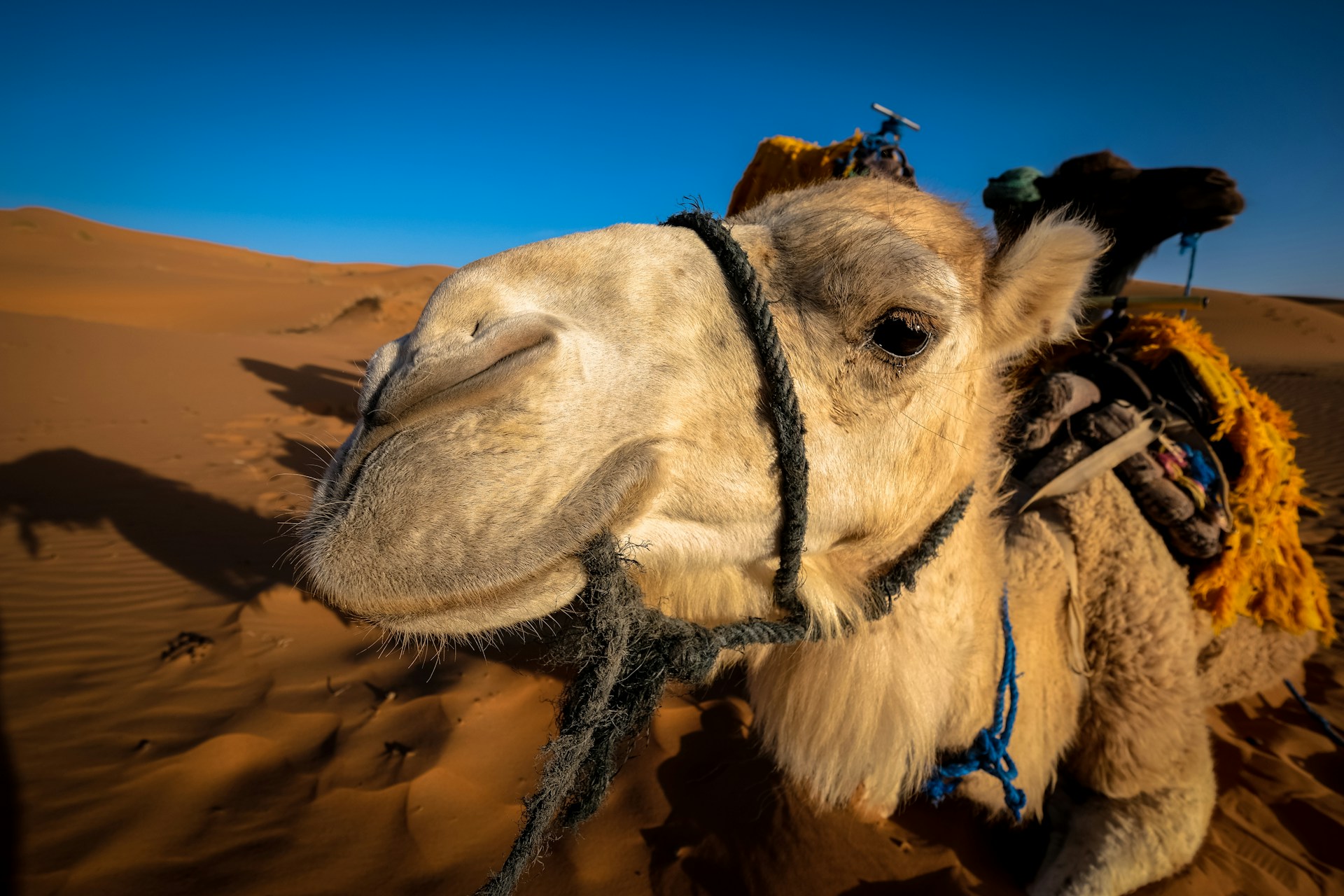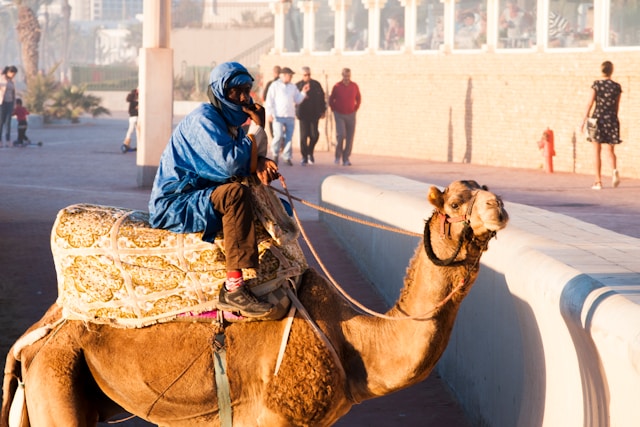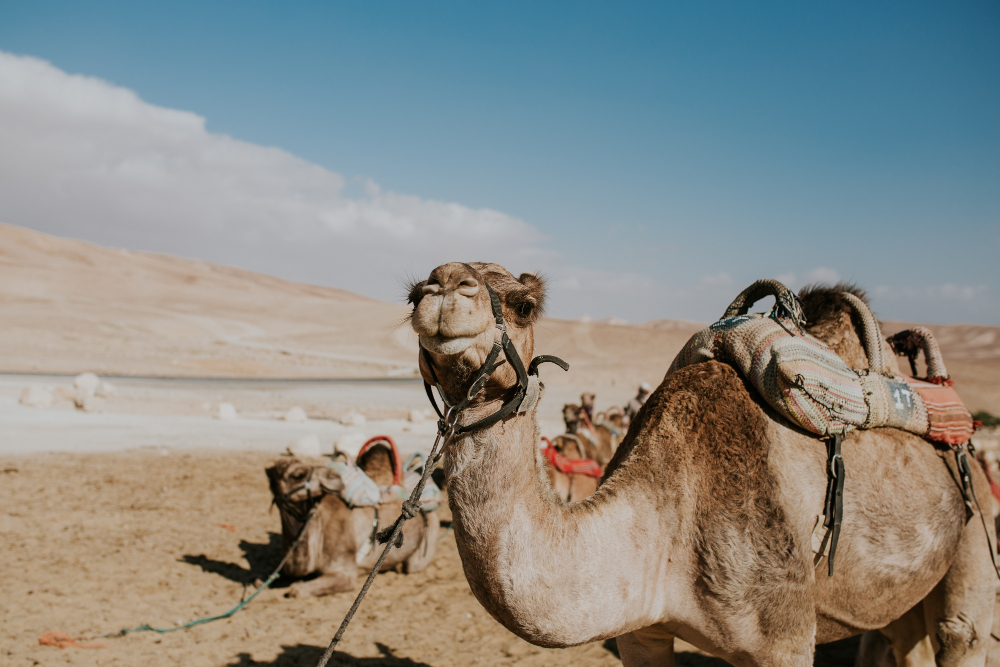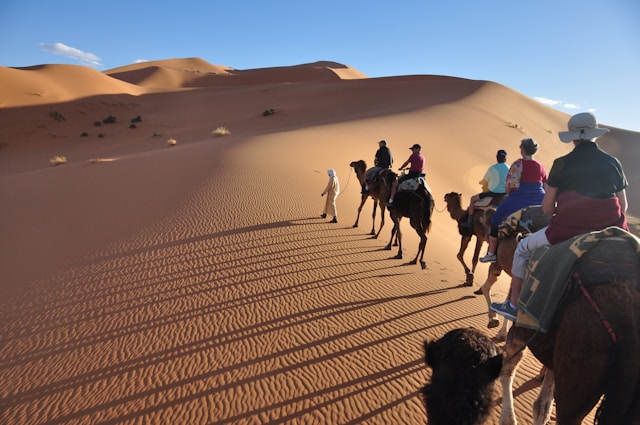

Few travel experiences capture the essence of Morocco like riding a camel across golden dunes, following ancient caravan trails once traveled by merchants and nomads. To ride a camel in Morocco – an authentic desert adventure – is to step back in time and embrace the magic of the Sahara. Whether you dream of watching the sunrise over the dunes of Merzouga, camping beneath the stars, or exploring Marrakech before venturing south, camel riding offers both cultural insight and unforgettable beauty.

Discovering the Camel Tradition in Morocco
Camels, often called the “ships of the desert,” have long been central to Morocco’s heritage. For centuries, Berber and Arab traders relied on them to transport salt, spices, and goods along the trans-Saharan trade routes. Today, these majestic animals continue to play a role in Morocco’s culture and tourism, connecting visitors with the desert’s timeless rhythm.
Unlike other forms of travel, camel riding immerses you in silence, slow movement, and connection to the environment. This is why many travelers choose to ride a camel in Morocco not only as an adventure but also as a way to experience the desert lifestyle firsthand.
Must-See Experiences When Riding a Camel in Morocco

1. Merzouga and the Erg Chebbi Dunes
Merzouga, near the Algerian border, is one of the most iconic spots for camel treks. The Erg Chebbi dunes rise dramatically, glowing orange at sunrise and sunset. Most tours include an overnight stay in desert camps, complete with Moroccan cuisine, music, and stargazing.
2. Zagora – Gateway to the Sahara
Known as the “door to the desert,” Zagora offers shorter treks perfect for travelers with limited time. Here, camel rides usually last a few hours to a day, leading to palm groves, oases, and smaller dune fields.
3. Marrakech and Agafay Desert
If you cannot travel far south, the Agafay Desert near Marrakech is a convenient choice. Though rocky rather than sandy, it provides a similar atmosphere, and camel rides here often include tea with locals while gazing at the Atlas Mountains.
4. Cultural Encounters
Beyond landscapes, camel riding allows you to meet local guides, often Berber nomads, who share stories of desert life. From preparing mint tea to playing traditional drums, these encounters enrich the adventure.
Travel Tips and Cultural Insights

What to Wear
Comfort is key. Loose, breathable clothing works best, along with a scarf or turban to protect from sun and sand. Many tours provide headscarves for travelers to enhance the experience.
Timing Your Ride
The best seasons are spring (March–May) and autumn (September–November). Temperatures are milder, making camel rides more comfortable. Sunrise and sunset rides are especially popular for their magical light.
Respect for Animals
Camels are strong, but it’s important to choose ethical tour operators that care for their animals properly. Look for guides who limit the weight camels carry and provide rest, water, and shade.
Blend with Local Traditions
Camel riding is more than an activity—it’s a cultural bridge. Show respect by learning a few words in Arabic or Tamazight, and by enjoying Moroccan hospitality, from shared meals to tea rituals.
Real-World Traveler Stories

Many travelers describe their first camel ride as “like stepping into a story from a desert legend.” One visitor recalled the rhythm of the camel’s steps under a sky painted with stars, feeling as though time had slowed. Another traveler in Zagora shared how the guide’s songs echoed across the dunes, turning the desert into a stage of tradition and serenity.
These stories highlight why to ride a camel in Morocco – an authentic desert adventure remains one of the most memorable experiences for visitors from around the world.
Seasonal Insights and Future Travel Recommendations
- Winter (December–February): Cold nights but clear skies make for excellent stargazing. Bring warm layers if camping.
- Spring (March–May): Ideal weather, blooming desert plants, and comfortable daytime rides.
- Summer (June–August): Very hot, especially in Merzouga. Shorter rides are recommended early in the morning or evening.
- Autumn (September–November): Another great season with pleasant temperatures and lively desert tours.
For the future traveler, combining camel riding with other Moroccan highlights—such as visiting Marrakech (see Marrakech) or the historic city of Fez (see Fez)—creates a well-rounded journey blending culture, history, and adventure.
FAQ: Ride a Camel in Morocco – An Authentic Desert Adventure
Is riding a camel in Morocco safe?
Yes, camel rides are generally safe and led by experienced guides. Beginners are welcome, and camels are calm animals used to carrying travelers.
How long do camel rides usually last?
Rides can be as short as one hour or as long as multiple days with overnight desert camping. The most popular option is a sunset ride with a night in a desert camp.
What should I pack for a camel trek?
Bring sunscreen, sunglasses, a hat or scarf, comfortable pants, and a reusable water bottle. For overnight trips, layers are important as nights can get cold.
Are camel rides suitable for children?
Yes, older children usually enjoy the experience, but very young kids may find it uncomfortable. Always check with your tour operator beforehand.
Do I need to book in advance?
It’s recommended, especially in peak travel seasons. Many tours can be booked online or through local guesthouses.
Conclusion
To ride a camel in Morocco – an authentic desert adventure is to embrace the magic of the Sahara and connect with one of the country’s oldest traditions. From the towering dunes of Merzouga to the rocky plains of Agafay, camel rides offer an unforgettable way to experience Morocco’s landscapes and culture.
So, when planning your Moroccan journey, don’t just visit the cities—step into the desert, mount a camel, and let the timeless rhythm of the Sahara guide your adventure.




